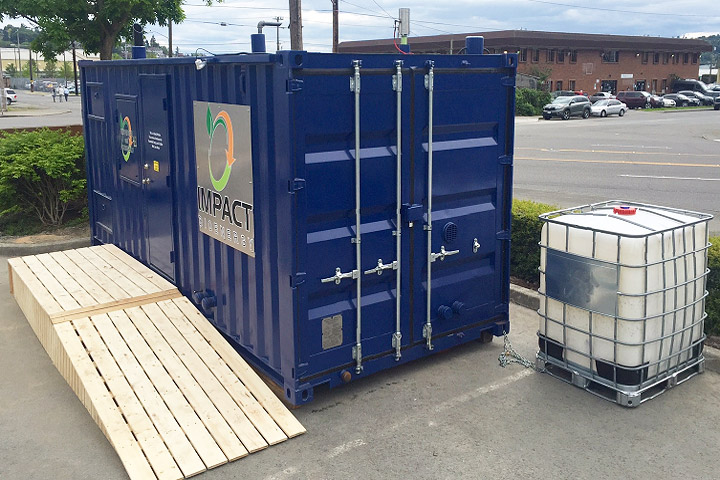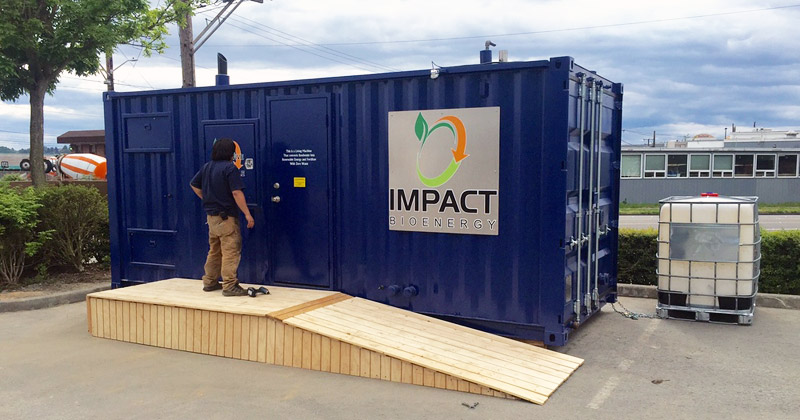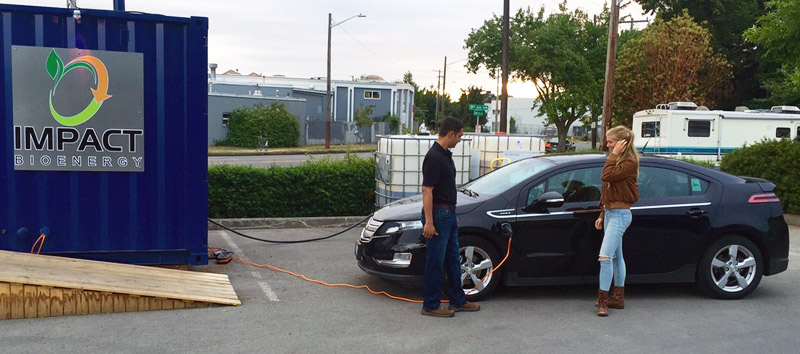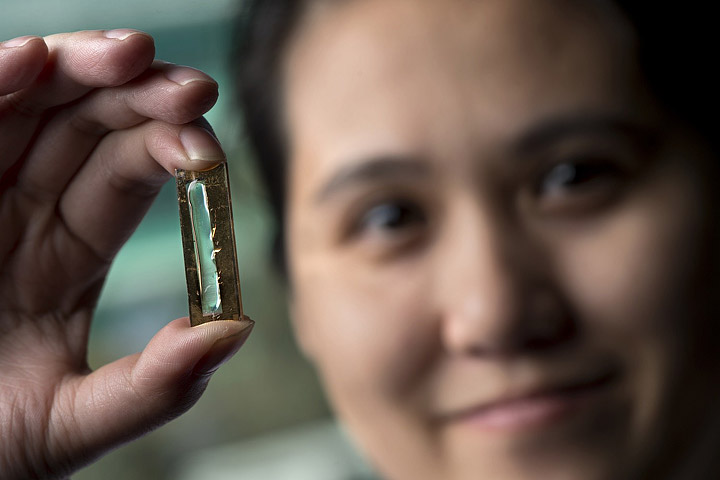
Schools, campuses, food and beverage producers, and food banks all produce thousands of pounds of food waste each year, and typically have to pay to have the waste hauled to a central location such as a landfill. In landfills, organic matter breaks down and produces methane, a potent greenhouse gas that, if captured, can be a valuable source of energy.
Enter Impact Bioenergy: the company’s small anaerobic digester systems, or microdigesters, convert food waste and other organic matter like paper and yard clippings into fertilizer and energy in the form of electricity, heat, and even transportation fuels.
As the company’s 33-year-old co-founder Srirup Kumar explained to Conscious Company, Americans typically “waste roughly one-third of our food, while one in six families in America lacks a secure supply of healthy food. By transforming food waste to a food resource, we can do better than this while doing right for our environment.”

Using the company’s microdigester, 10 pounds of food waste can be converted to between one and two kilowatt-hours of electricity and a gallon of liquid fertilizer. By diverting waste, avoiding transportation emissions from hauling waste, generating renewable energy, and return- ing nutrients to the soil, these on-site and portable systems provide a truly holistic solution to the food waste problem and help close the loop for the local food movement.
Impact Bioenergy is also democratizing food waste processing through a service it calls Community Supported Biocycling, or CSB, which is inspired by the cooperative model. By selling the three separate value-streams created by its microdigesters — food waste processing, renewable energy, and soil fertilizer — to community stakeholders, Impact Bioenergy can provide a hyperlocal solution to the food waste problem. Its first CSB demonstration project launched in April of 2015 in partnership with Fremont Brewing Company and Seattle Urban Farm Company.
Looking to the future of the waste-to-energy eld, Kumar said he believes that the waste processing industry will transform from a resource-intensive business to a restorative one. “Food waste will become a commodity, like oil,” said Kumar.
“One ton of food waste actually has about the same energy content as a barrel of oil, along with plenty of water, nutrients, and organic matter that can be recovered for hyperlocal food systems.” Kumar also sees the waste sector becoming decentralized, the same way that computer processing became decentralized as people and businesses transitioned from large mainframes to personal computers and smartphones.

“The waste-to-energy industry will under- go decentralization because there are simply too many externalities that have resulted from the centralized solutions of the 20th century, such as landfilling. The capacity to upcyclefood waste will be distributed hyper- locally in the 21st century.” And as for the up-and-coming generation and how they may adopt solutions like Impact Bioenergy’s, Kumar said, “We [Millennials] have hyperlocal values and we like to internalize externalities. Wasting resources is becoming unthinkable to younger generations, and they are ready to mobilize forpeople, planet, profit, and progress.




Leave a Reply